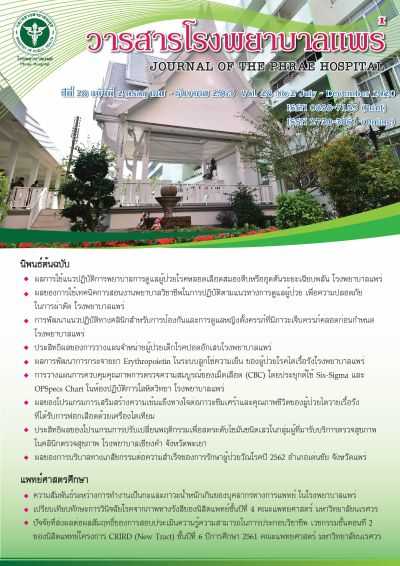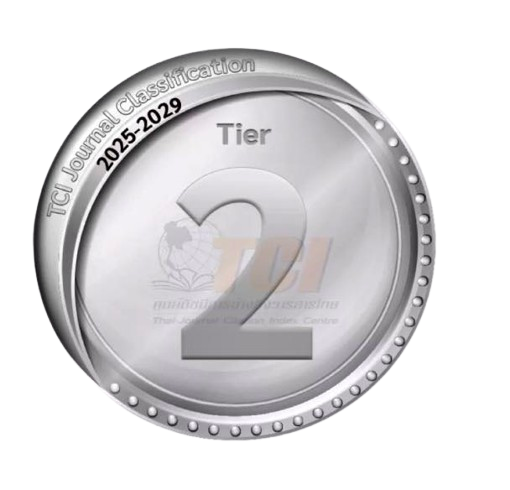The Effectiveness of Discharge Planning for Pediatric Patients with Pneumonia in Phrae Hospital
Abstract
Background: The problem of hospital readmissions in pediatric patients with pneumonia is due to famil caregivers lack of knowledge, skills and clinical practice to provide care. D-METHOD discharge planning and support for promoting caregivers to recognize their self-efficacy will enable them to take care of pediatric patients with pneumonia correctly, and reduce readmissions.
Objective: To compare the effect of a discharge planning model for pediatric patients with pneumonia and routine care discharge planning.
Study design: The Historical controlled design was conducted in caregivers and children aged 1 month to 15 years admitted in the pediatric ward at Phrae hospital. 47subjects were assigned to the control group, who received routine care discharge planning studied from June 2019 to September 2019. The intervention group of 30 subjects, who received a discharge planning model for pediatric patients with pneumonia was conducted between June 2020 and July 2020. We use exact probability test and t-test to make judgments that an observed difference between groups. The paired t-test is used to compare the mean self-efficacy score before and after received discharge planning model for pediatric pneumonia patients.
Results: In pediatric pneumonia patients, most of them had fever and cough, needed oxygen, prescribed with inhaler and received antibiotics, also similar between the two groups. However, the mean duration of hospitalization in the intervention group were significantly less than those in the control group (3.5±1.3 VS 4.5±2.2, p=0.031). Readmissions of the control group was 14.9 %, but none of readmissions was found in the intervention group (p=0.039). After used discharge planning for pediatric pneumonia patients, the mean self - efficacy score of caregivers was significantly increased compared with the baseline(4.2±0.1 VS 3.5±0.1, p<0.001). Moreover, caregivers' satisfaction with nursing service was high level.
Conclusions: A discharge planning model for pediatric patients with pneumonia decreased the length of hospital stay and readmissions. Caregivers could improve care of pneumonia patients correctly and satisfied with nursing services.
Keywords: discharge planning, pediatric patients with pneumonia




